I still remember the first time I read the rulebook for Hansa Teutonica Big Box. I was in my basement, at my condo in the Wicker Park area a few years ago. I whipped through the book then set up a dummy-handed three-player game. Two turns in, I knew it was going to be great…and that’s the beauty of doing a walkthrough with a well-written manual.
Fast forward to the moment I began reading the rulebook for Raising Robots, the new game from the designers of Stockpile, Brett Sobol and Seth Van Orden. If you’ve read my Stockpile review, you know that’s my favorite auction game ever made. (That means expectations were high.)
One pass of the rulebook, and I knew it: Raising Robots was gonna sing. My main issue with the game is the incredibly low levels of interaction—yes, the complete opposite of a shouty, sharp auction game such as Stockpile. But if you like your tableau builders to combine the best elements of two of the best games in The Hobby™, give Raising Robots a look right now.

I Said “Fabricate”, You Dirtbag
Raising Robots is a 1-6 player action selection, engine-building tableau game positioning players as young inventors competing to assemble the greatest collection of robots. Play is mostly simultaneous and almost completely heads-down during the eight rounds of each game.
Each round, players will select two of the five actions on their player board. These actions include upgrading parts of the player board (“Upgrade”), building robots (“Assemble”), and actions spread across three different rows of the player board that serve as available slots for completed robots (“Design”, “Fabricate”, and “Recycle.”) Those final three action lines lean into certain properties. For example, the Fabricate line mostly deals with getting players more resources that are used to pay for other card actions later.
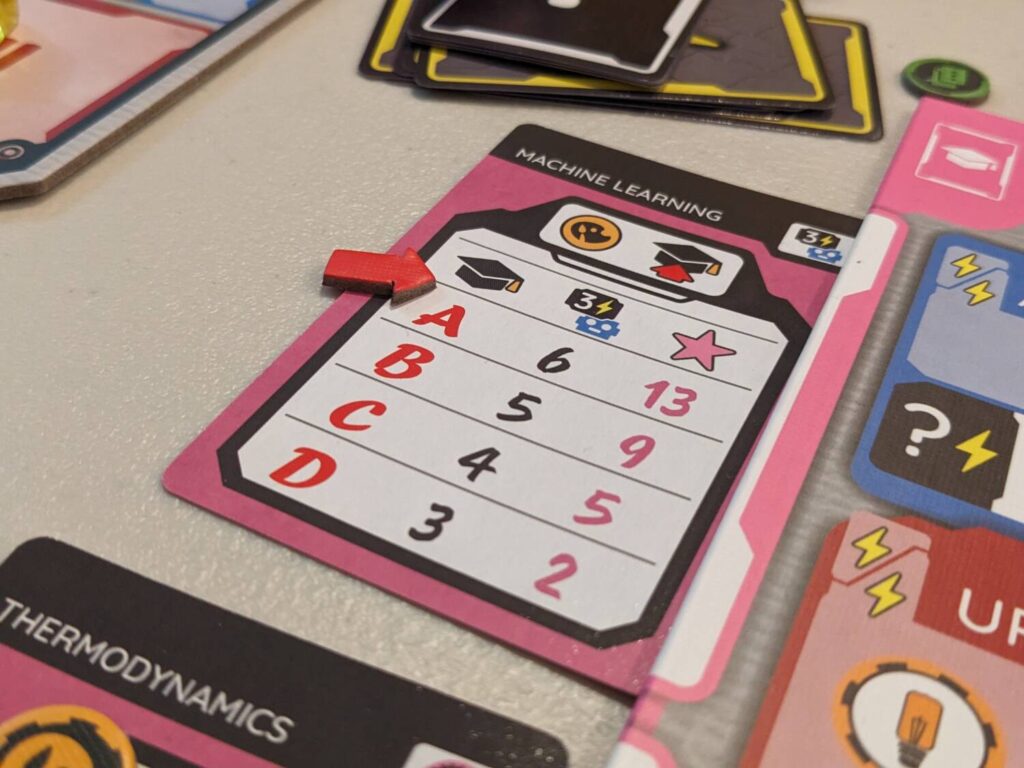
Players start a turn by revealing two energy cards from a personal deck, used to determine how many action points a player has for a specific action on their turn. Then each player must secretly play one action card face-down beneath each of two revealed energy cards. When each player reveals their action choices for the round, a small number of cubes may also be added to a shared action board. These cubes represent energy available for all players to boost an action. When this happens, even players that didn’t choose an action will get a small amount of power to do something with actions they didn’t select.
This last part ends up being such a blast in Raising Robots. On a turn, I might need to do the Assemble action to build robots from my hand of robot cards. But I also might need to do the Design action. A glance to my left reveals that Kev has a lot of robots in his Design row, and his two face-up energy cards each show that he’ll be adding a cube to an action. It’s late in the game, and I’m sure Kev is gonna pick Design. That means cubes will be going there, giving me a chance to pick a different second action with my cards, almost assuredly getting me three actions on my next turn.
Players reveal their chosen actions, and cubes get added to the shared board. Then you have a certain amount of energy (action points) to do all the chosen actions in your tableau. And that’s where the fun—and the mumbling—begins.
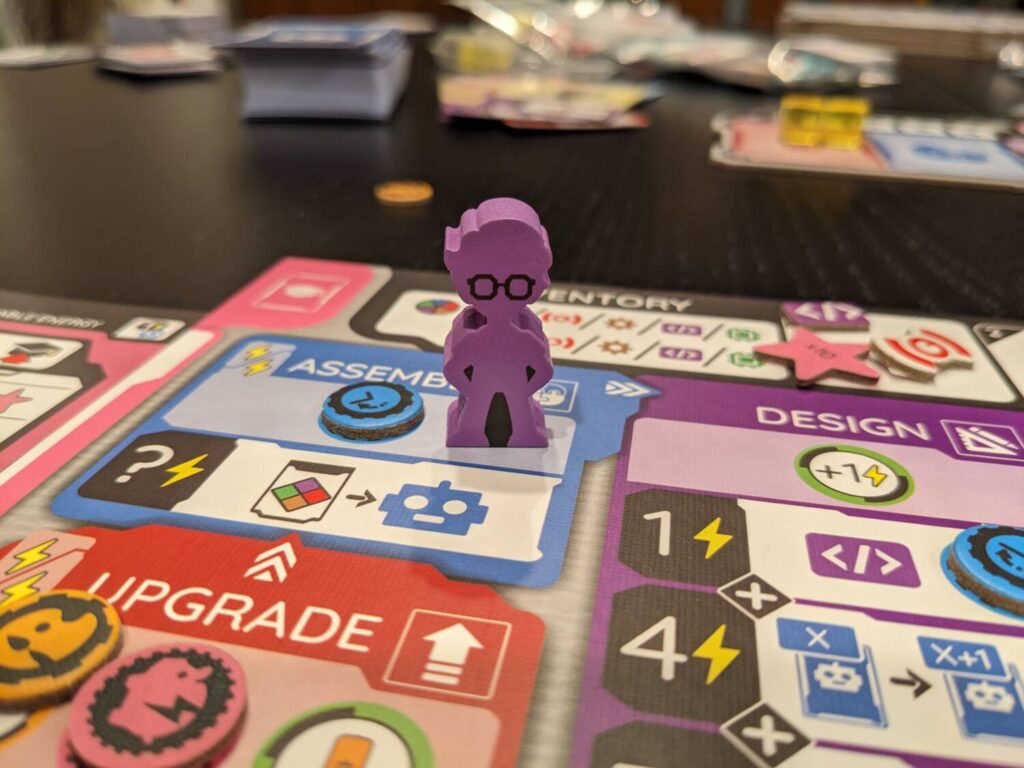
Shh, I’m Playing This Game By Myself
Raising Robots is a dream for anyone who likes to fiddle with a tableau. In much the way that Earth appeals to some players, or recent tableau builders like Imperial Miners worked for players in my circle, in some games it is fun to add cards to trigger upgrades to get a load of stuff to score a bunch of points.
And Raising Robots does that better than most of the comparable games I’ve tried in months, if not years.
That’s because the system is so intuitive. And because everything feels broken. “OP.” Ridiculous. I was surprised how many times players showed me a robot card, then laid it next to the others that were in the same row, and said something along the lines of
“Hey, just checking on this. I can do ALL of this on the same turn?”
“You’re saying I get this EVERY TIME I take this action?”
“My starting power says I get to do this…are you sure? Feels like a major advantage.”
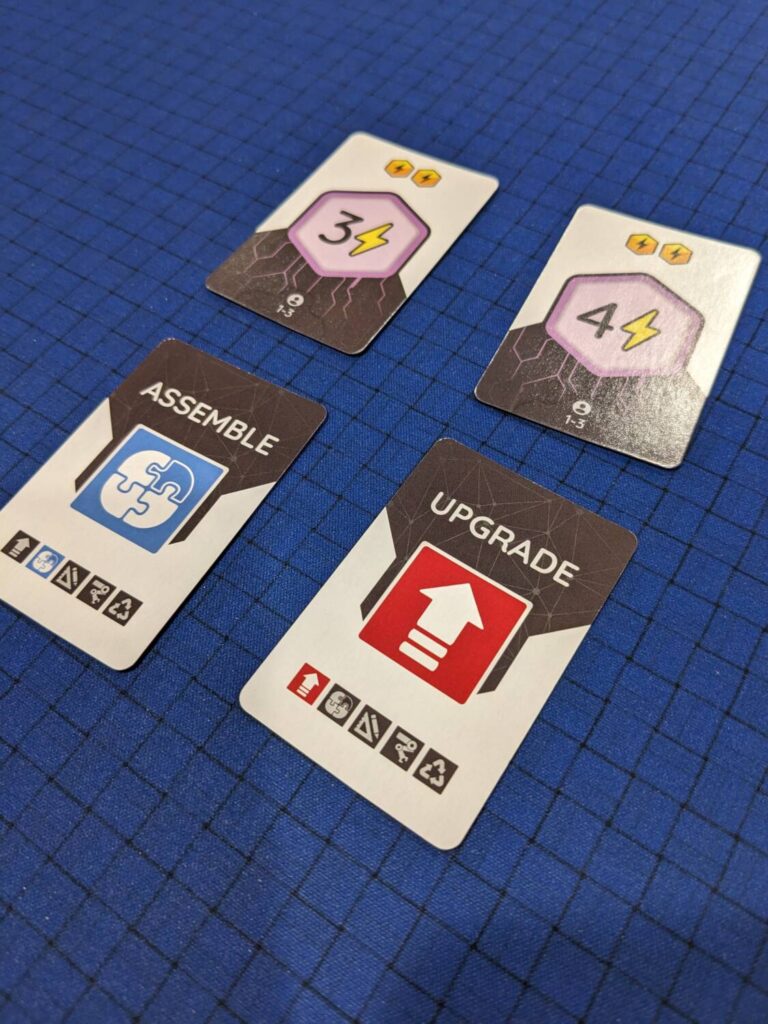
Raising Robots turns into a delightful buffet of action chaining. Sure, it can be a little “mumbly”, a word I use to describe any of these multiplayer solitaire beasts where people get to do cool things, but mostly by themselves. In fact, one of my annoyances with Raising Robots is that people basically have to talk out their turns, but out loud, meaning that I can’t also talk out my turn because it’s so hard to focus when everyone else seems to be mumbling over their player board.
In this way, Raising Robots is both amazing and disappointing, particularly if you like to analyze things that are happening during a game. I played Raising Robots three times for this review: solo, three players and six players, the final being the game’s max player count. I don’t think I would do six players again, in part because you end up waiting for more players to finish running their engine, without any way to influence or stop a runaway player from crushing the competition. And if I’m basically playing a game by myself, why would I add more players?
Sure, you could argue that it’s great to have good game options at the five and six player counts. This, I get, and that’s why I will be keeping my copy around for the bigger game nights at my house. But if I really want to play Raising Robots, I’m going to play it solo or with maybe a second player. There’s no major addition with more bodies sitting nearby.
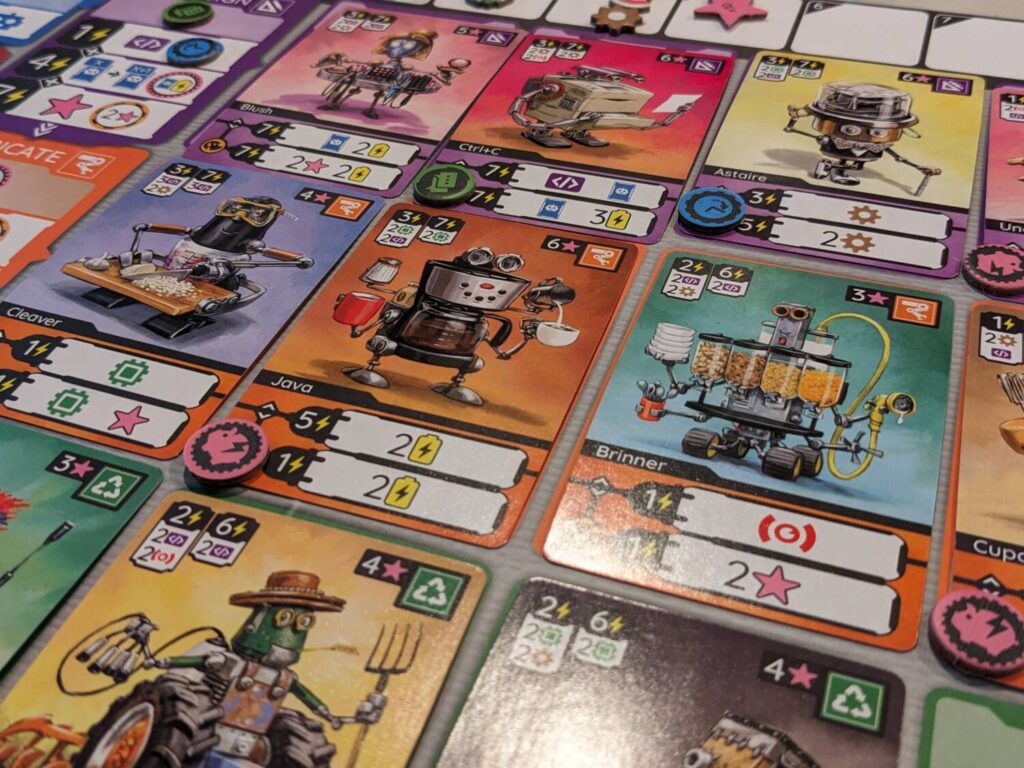
Get It
Raising Robots is great. Given the designer pedigree, this was not a surprise, but given the wealth of solo-style engine builders in the market, I’m surprised to report that Raising Robots stands above the majority of similar products I’ve tried.
Raising Robots sits at a nice intersection between games like Race for the Galaxy and its action selection mechanism, and games like Wingspan. Based on the response I got from my multiplayer games of Raising Robots (with seven different people, all of whom are core/hardcore hobbyists), Raising Robots should replace your copy of Wingspan if you are looking for a similar experience to try with gamers and not a mixed crowd that might include your non-gamer audiences.
The production is great, and a special shout-out to artists Viktoriya Fajardo and Howard McWilliam for their work on the Inventor (personal player powers) and robot cards…they really add something to the game. Each of the robot cards has a unique picture, and I love that the names are usually basic English names, like Tony or Edward. That led to lots of laugh-out-loud moments, especially because the Inventor cards are likely based on real-life inventors. (While only first names are used, names like Shigeru, Nikola, Albert, and Katherine—likely a nod to the NASA scientist featured in the film Hidden Figures—feel like a dead giveaway.)
Games of Raising Robots ran in line with the suggested times on the box, anywhere from 45-90 minutes based on player count. 90 minutes is really pushing it for a game like this, hence the callout from earlier in this review: low player counts are the way to go.
Raising Robots is a fun time at the table. Stop reading and start mumbling!


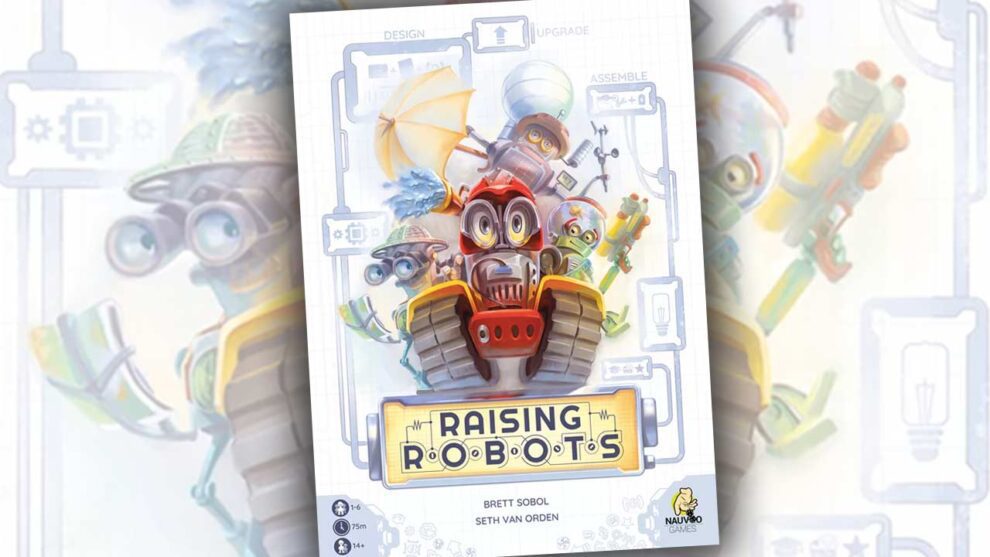









Thanks for sharing your thoughts, Justin! I also appreciate when a rulebook is so intuitive and well laid-out that you can practically feel the gameplay goodness dripping off it.
Thanks so much for commenting Brett, and for designing a great game!
Great review! (as always)
I have, unfortunately, not gotten to play more than a couple of games of this so far. But what I have played has been fantastic!